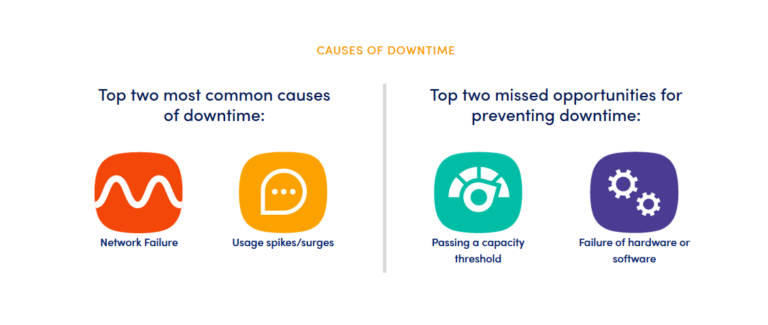
The second wave of enterprise AI/ML adoption is growing rapidly. We expect it to crest in 2021, as many organisations have been increasing and accelerating their investments in tools and people.
That was one of the unmistakable conclusions of our 2021 enterprise trends in machine learning report: 83% of the companies we surveyed said their AI/ML budgets had increased year-over-year, and we found that the average number of data scientists they employ has increased by 76% year-over-year. These changes came even as many organisations tightened their overall spending and refocused their strategic priorities amidst all of 2020’s disruption and uncertainty related to the COVID-19 pandemic. These companies aren’t simply moving forward with their AI/ML initiatives in spite of the pandemic; they’re doubling down on their investments because of it.
Many organisations have begun to understand just how critical ML is to remaining competitive in uncertain and rapidly evolving conditions. When we ran a separate survey during summer 2020 to find out how businesses were adapting to the pandemic’s impacts, it revealed a renewed sense of urgency around AI/ML investments: 43% of respondents said that AI/ML mattered “way more” to their business than they’d previously realised.
Our independently conducted 2021 report included input from more than 400 leaders and practitioners across a diverse mix of technical and business functions, all of whom have a stake in their organisation’s AI/ML strategy. They’re not just increasing their spending and staffing, either: They’re accelerating their pursuit of a growing number of enterprise ML use cases, with customer experience and automation leading the way.
You need to be doing this, too. The second major wave of enterprise AI/ML adoption is underway, and you can still capitalise on the immense opportunities ahead. But the time to act is now. Organisations that take a “wait-and-see” approach are at imminent risk of being left behind, particularly as so many other companies are scaling up their investments. Not only are your competitors increasing their AI/ML budgets (evident in the 83% YoY increase mentioned above), but they are moving their initiatives to the top of their strategic priority lists. Approximately three out of every four (76%) respondents in our 2021 report said they are prioritizing AI/ML over other IT initiatives, with 28% reporting that it is their top priority overall. These companies have realized that their success is directly tied to their ability to adapt to rapidly changing business conditions — and that AI/ML is the key to doing so.
This is no longer the sole purview of elite technology companies. Companies of all sizes and across just about every industry can get up and running with AI/ML, thanks in large part to the spread of easy-to-use tooling. The opportunities are more accessible than ever. You don’t need a ton of time or resources to get started — and it’s absolutely crucial that you do so soon.
Your competitors are actively pursuing AI/ML initiatives today, regardless of your specific industry. We’re seeing many longstanding enterprises begin to drive huge transformations of their businesses and industries with AI/ML. More and more use cases are being pursued in age-old industries, from insurance to agriculture to healthcare to financial services and more. The bellwether financial firm JPMorgan Chase has even built an entire AI research program and data platform. There are virtually no industries where this is irrelevant. So you need to act with urgency as this second wave of enterprise adoption continues to intensify.
You also need to build for operational efficiency and scale. We think of this as industrialising your machine learning operations (MLOps). While easy-to-use tools reduce the barrier to entry, they only get you partway to your destination. Invest in repeatable, automated processes or you’ll hit a wall of technical debt and other potential issues. MLOps paves the road to tightly integrated, well-aligned technology stacks, processes, and teams that make it easier to deploy more and more models in the future, not harder and harder. This isn’t something you can wait on: If you’ve manually bootstrapped the deployment of even a handful of models to production, you need MLOps. Without it, you’ll quickly accrue unnecessary technical debt that will inevitably hinder your organisation’s ability to scale and deliver meaningful business value.
This is already a significant issue. Our 2021 report found that while many organisations are increasing budgets and prioritisation, it’s taking them longer to get models into production. Data scientists are still spending too much of their time on operational tasks, a problem that worsens as the number of models in production increases. This tells us that even as many organisations increase their spending and hiring, they’re actually allocating more of their growing resources toward manually scaling their AI/ML initiatives instead of investing in the operational efficiency that will maximise results.
There’s a better way. Organisations no longer need to take a DIY approach to MLOps. There are robust solutions that can simplify many of the complex issues involved in scaling your AI/ML initiatives in production. Our report found that companies that use third-party MLOps solutions see improved outcomes compared with companies that go it alone and build and maintain everything themselves. They spend less on infrastructure, deploy models to production faster, and tie up less of their data scientists’ time on model deployment.
The pattern here is clear. Regardless of your particular industry, more and more businesses are identifying a growing list of use cases for AI/ML that can help transform their businesses and boost their competitiveness. They’re industrialising their AI/ML initiatives with MLOps to ensure their technology stacks, processes, and people are well-aligned. And in doing so they’re positioning themselves to rapidly adapt to and act on changing signals in their businesses.
Don’t make the mistake of thinking AI/ML doesn’t apply to you or your industry. Doing so would mean missing out on potentially massive strategic opportunities, from new or growing revenue streams to increased efficiencies throughout your business operations. Your competitors are doing it, it’s easier than ever to get started, and third-party MLOps solutions can help minimise technical debt and other operational complexity that will otherwise limit the positive business impacts of your initiatives.
You can absolutely get in on the second wave of enterprise adoption, but the time to act is now. You can’t afford to wait.
Photo by Tim Mossholder on Unsplash

Interested in hearing industry leaders discuss subjects like this and sharing their experiences and use-cases? Attend the Cyber Security & Cloud Expo World Series with upcoming events in Silicon Valley, London and Amsterdam to learn more.




